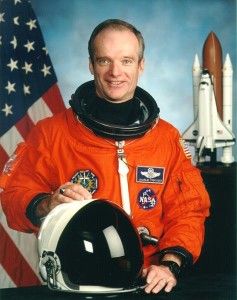by Rich Smith, author on The Motley Fool
As vice president and general manager of Orbital ATK’s Propulsion Systems business, Charlie Precourt oversees such vital national programs as development of the solid rocket booster that will help send NASA’s new Space Launch System (SLS) beyond the Moon in 2018, and to Mars perhaps 15 years later. Precourt is also a four-time veteran of NASA’s Space Shuttle (flying once as mission specialist, once as pilot, and twice as mission commander), and member of NASA’s Astronaut Hall of Fame. As such, he has singular insight into both where NASA is going and where it’s coming from.
Earlier this month, I had an opportunity to chat with Col. Precourt by phone, and pose a few key questions about the cost of NASA’s planned mission to Mars — a cost that some critics have said could reach as high as $500 billion.
What follows are a few excerpts from our discussion.
Rich Smith: Col. Precourt, you served aboard the Space Shuttle. You’ve seen missions sent up that were fully automated, and others in which astronauts played key roles. How important is it that future NASA missions — to Mars, to the Moon, to the asteroids — be manned missions? And how much more does it cost to run a manned mission versus a robotic mission?
Charlie Precourt: Robots and astronauts are complementary. A robot is designed to do a set number of experiments within a budget that will permit this. A human can troubleshoot those missions. For example, a human could perform all the experiments that the Curiosity Rover has done over a term of years in just a few days.
The cost is certainly greater for human missions. Yet the value of human missions is significant in the inspiration it provides to the next generation of scientists and engineers, and the motivation to maintain our world leadership position in space.


